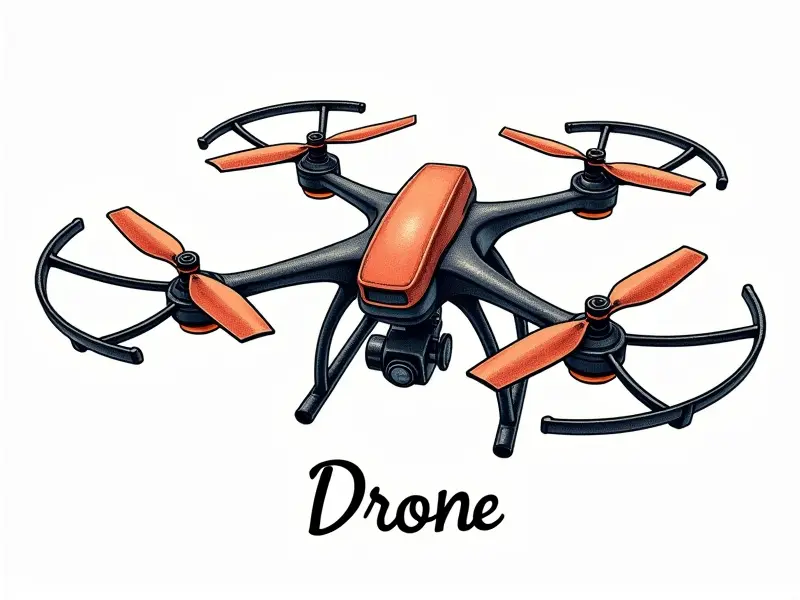How far do iFlight drones fly?

How Far Can iFlight Drones Fly?
The performance and capabilities of iFlight drones are a topic of great interest among drone enthusiasts. Understanding the range limitations is crucial for both beginners and experienced pilots to ensure safe and effective operation. In this article, we will explore how far iFlight drones can fly under various conditions.
Range of iFlight FPV Racing Drones
iFlight FPV racing drones are designed with speed and maneuverability in mind. These high-performance models typically have a range that varies based on the transmitter's power, antenna quality, and environmental factors such as interference from other electronic devices.
- Transmitter Power: The strength of your transmitter significantly impacts the range. Higher-powered transmitters can extend the drone’s reach beyond 1 km under optimal conditions.
- Antenna Quality: Using high-quality antennas, such as whip or diversity antennas, enhances signal reception and thus increases the maximum distance you can fly your iFlight FPV racing drone.
- Environmental Factors: Obstacles like buildings, trees, and electronic interference from Wi-Fi networks can reduce range. Operating in open fields away from urban areas maximizes flight distance.
Max Flight Distance for iFlight Drones
The maximum flight distance of an iFlight drone depends on several factors including battery capacity, airframe design, and the type of motors used. For instance:
- Battery Capacity: Larger batteries provide more power, extending the flight time and range. High-capacity LiPo batteries are commonly used in advanced models.
- Airframe Design: Efficient airframes with optimized aerodynamics allow for longer flights without compromising speed or agility.
- Motors and Propellers: High-performance motors paired with efficient propellers enhance thrust, contributing to greater range. However, this also increases power consumption.
iFlight Drone Flying Range Explained
The flying range of an iFlight drone is determined by both technical specifications and practical limitations. Here’s a breakdown:
- Technical Specifications: Official documentation from iFlight provides baseline ranges based on standard settings, but real-world conditions often vary.
- Practical Limitations: Beyond the technical parameters, factors such as signal strength and battery life play crucial roles in determining actual flight distance.
Distance Capabilities of iFlight Drones
The distance capabilities of iFlight drones vary widely depending on the model. For example:
- iFlight XLR Series: Known for its high-speed performance, this series can typically fly up to 2 km with optimal settings.
- iFlight Racer Pro: Equipped with advanced features like telemetry and long-range receivers, it offers an extended range of around 3-4 km under ideal conditions.
iFlight Drone: What's the Furthest It Can Go?
The maximum distance an iFlight drone can travel is influenced by multiple factors:
- Transmitter Settings: Adjusting settings such as power output and frequency can enhance range.
- Signal Quality: Ensuring a clear, uninterrupted signal between the transmitter and receiver is key to achieving maximum distance.
Maximum Reach of iFlight FPV Drones
The reach of iFlight FPV drones can be extended with certain modifications:
- Upgrade Transmitter: Upgrading your transmitter to a higher power model significantly increases the range.
- Use High-Quality Antennas: Installing better antennas enhances signal strength and clarity, allowing for longer flights.
Flight Range of iFlight Quadcopters
iFlight quadcopters are versatile and can achieve impressive ranges with the right setup. Here’s what to consider:
- Battery Management: Efficient battery management systems allow for longer flights.
- Airframe Design: Lightweight yet durable designs optimize performance and range.
iFlight Drone Range and Flight Limitations
To fully understand the limitations of iFlight drones, it’s essential to consider:
- Battery Capacity: A larger battery provides more power but also adds weight, impacting range.
- Signal Interference: Minimizing interference from other electronic devices enhances flight distance and stability.
Exploring the Reach of iFlight Quadcopters
The reach of iFlight quadcopters can be explored through various methods:
- Field Testing: Conducting field tests in different environments helps determine real-world range.
- Trial and Error: Experimenting with different configurations to find the optimal setup for maximum reach.
iFlight RC Drones: Maximum Flight Range
The maximum flight range of iFlight RC drones can be maximized by:
- Optimizing Settings: Fine-tuning transmitter and receiver settings to achieve the best possible range.
- Selecting High-Quality Components: Using high-quality batteries, motors, and antennas ensures optimal performance and extended range.
Conclusion
In summary, the flight range of iFlight drones is influenced by a variety of factors including transmitter power, antenna quality, battery capacity, airframe design, and environmental conditions. By understanding these elements and making appropriate adjustments, you can maximize the distance your iFlight drone can fly. Whether you are an enthusiast or a professional pilot, optimizing your setup will enhance both performance and safety.

